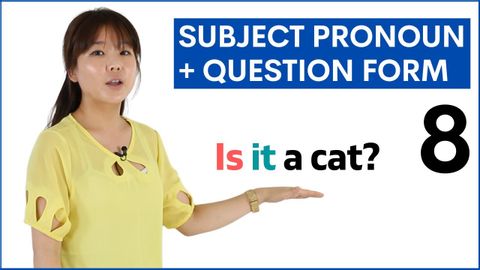學習主語代詞問題形式 | 基礎英語語法課程 (Learn Subject Pronoun Question Forms | Basic English Grammar Course)
Summer 發佈於 2021 年 09 月 09 日  沒有此條件下的單字
沒有此條件下的單字- n. (c./u.)公有地;公共用地;廣場
- adj.共用的;常見的;普通的;普遍的;粗俗的;普通名詞
US /ˈsɛntəns/
・
UK /'sentəns/
US /bɔrd, bord/
・
UK /bɔ:d/
- n. (c./u.)板子、刊版;董事會;委員會;(衝浪板,滑板等)板(體育);木板;膳食
- v.t./i.登機;上船;寄宿;提供住宿
- v.t.板
